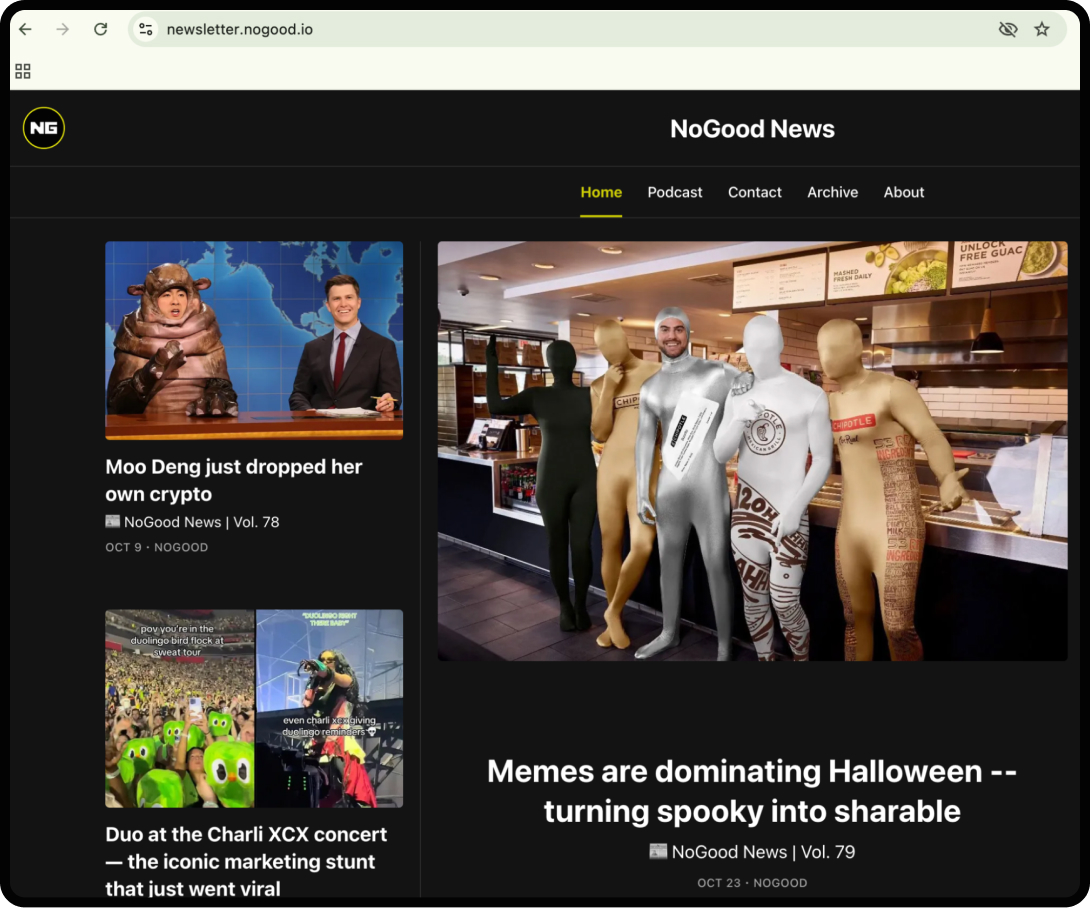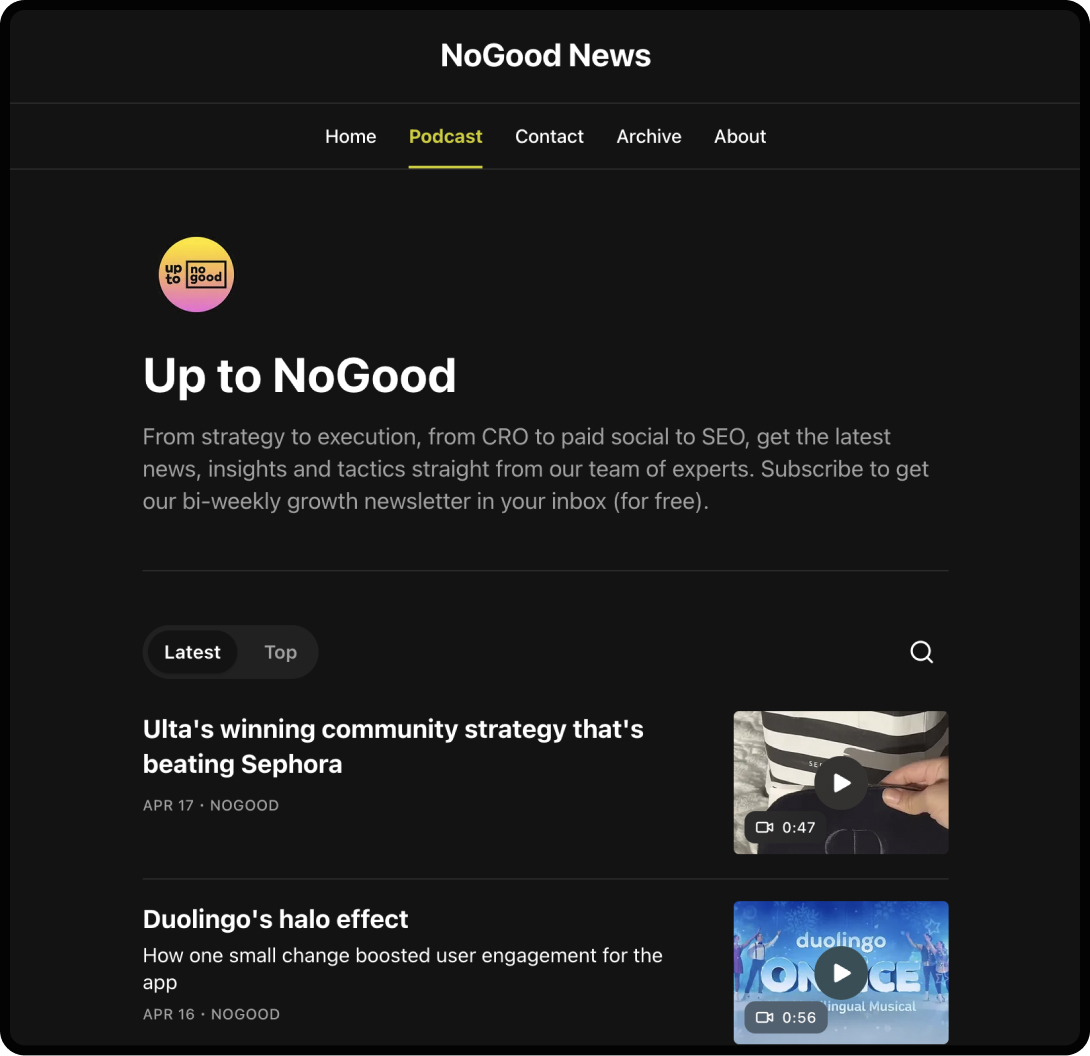Substack has surged in popularity over the past few years, with over 20 million active subscribers. So, what is drawing all these users? The platform offers a sense of community users can’t get on algorithm-based social platforms like Instagram and TikTok. Substack users want to curate their own feed with their favorite thought leaders rather than constantly being served new content.
Unlike traditional blogging platforms, Substack merges the best of both worlds: it offers the personalized touch of a blog with the broad reach and engagement features typical of social media platforms. This dual advantage attracts brands that want to connect more meaningfully with their audience.
Audiences today crave authentic, value-driven content that feels personal and direct.
For brands looking to build communities rather than just audiences, Substack offers a unique opportunity. It’s not just about pushing content; it’s about fostering dialogue, encouraging feedback, and nurturing relationships. This engagement is crucial for building a loyal subscriber base that is invested in the brand’s journey.
Never miss the latest growth marketing trends and tactics
The Appeal of Substack for Brands

Substack offers brands a unique opportunity to shift away from traditional digital marketing tactics and engage directly with their community. By focusing on delivering value through insightful, relevant content, brands can build a thriving newsletter community that goes beyond mere marketing. This platform empowers creators to transform their audience into an engaged community, increasing both reach and impact.
By focusing on delivering value through insightful, relevant content, brands can build a thriving newsletter community that goes beyond mere marketing. Substack’s model encourages brands to rethink their content strategies, emphasizing authenticity and direct engagement over broad, impersonal marketing efforts. By leveraging Substack, brands can create a vibrant community supporting audience growth and business goals.
9 Strategies for Scaling a Substack Community For Brands

To build a vibrant Newsletter community on Substack, brands can blend horizontal and vertical growth strategies. Horizontal growth involves launching niche newsletters, which allows brands to cater to diverse audience segments. Conversely, vertical growth focuses on deepening engagement with existing subscribers by adding value through additional products or services.
1. Craft Compelling Content
Crafting content that grabs attention and keeps readers coming back is key on Substack. But how do you make your newsletter stand out? Start by understanding your audience’s interests & tailoring your content to meet those needs. This means diving deep into topics that matter to them and delivering insights readers can’t find elsewhere.
Incorporating multimedia elements like videos, infographics, or podcasts can make your content more dynamic and engaging. A well-placed video can break up text & provide a richer experience, while infographics can simplify complex ideas, making them easier to digest.
Your readers can tell when content feels forced or insincere. By staying true to your brand’s voice and values, you’ll build trust and encourage loyalty. So, whether you’re using storytelling, expert interviews, or behind-the-scenes insights, make sure it aligns with who you are as a brand.
2. Build Out Your Substack Profile
Substack offers many personalization and customization features to help you maintain brand consistency. You can add your logo, brand colors, and fonts.
On your home page, you can feature your best newsletter posts and podcast episodes to showcase the amazing work your audience has been loving.
Your profile will also have an extensive about us page where you can share a little bit about your brand and your newsletter offering. Use this space to show off your brand voice and give your subscribers a sneak peek into what they’ll be getting in their inbox every week.
3. Community Engagement on Substack
Substack emphasizes community interaction through its commenting features. By enabling comments on newsletters, brands can foster discussions among subscribers, creating a sense of community and belonging. This two-way communication increases engagement and provides valuable feedback directly from readers.
Brands can initiate conversations around specific topics or respond to subscriber inquiries, enhancing the overall community feel. Substack’s “Discussions” feature allows for dedicated spaces where subscribers can connect beyond individual posts, further solidifying community ties.
For our newsletter, NoGood News, we support other newsletters with which we have an audience overlap. By commenting on and liking similar content, we can expand our reach and gain visibility with new subscribers.
4. Recommendations
Substack’s recommendation feature allows creators to publicly endorse each other’s work, creating a support network among writers. This cross-promotion is particularly effective because it exposes your newsletter to a broader audience that is already engaged with similar content. Many creators report that a significant portion of their subscribers comes from recommendations, making it a crucial tool for growth.
5. Podcast and Video Integrations

Substack has increasingly supported multimedia content, allowing brands to integrate podcasts and videos into their newsletters. This flexibility enables creators to diversify their content offerings and engage with subscribers through various formats.
For instance, turning written articles into podcast episodes can maximize the reach of each idea shared, catering to different audience preferences. Substack’s layout options allow for easy embedding of multimedia elements, further enriching the reader experience.
Substack has increasingly embraced multimedia content, allowing brands to integrate podcasts and videos into their newsletters. This flexibility enables creators to diversify their content offerings and engage with subscribers through various formats.
Multimedia content, such as videos and podcasts, captures attention more effectively than text alone. Research shows that audiences are significantly more likely to remember messages with relevant visuals or audio.
Video and audio formats allow for richer storytelling opportunities. Videos can evoke emotions through visuals and sound, while podcasts can convey narratives through voice and dialogue.
6. Post ‘Notes’
Substack’s Notes feature allows you to share short-form content, links, and thoughts with your audience. This feature operates similarly to social media platforms like Twitter, enabling real-time interaction and community building among writers and readers.
Regularly posting engaging notes can keep your readers informed and encourage them to interact with your profile. Consider sharing behind-the-scenes insights or recommendations that relate to your newsletter content.
7. Implement Custom Domains for Brand Consistency
Custom domains are a powerful feature on Substack that allows brands to maintain consistency in their online presence. By using a custom domain, brands can enhance their credibility and create a seamless experience for their subscribers.
This feature not only reinforces brand identity but also improves discoverability, as it provides a professional appearance that can attract more subscribers. Your custom domain also increases visibility in organic search results.
8. Subject Line Experimentation
Subject lines are often the first impression your email makes on subscribers. They play a pivotal role in whether recipients decide to open your email. Nearly 47% of users determine whether to open an email based solely on the subject line, making it essential to craft compelling and relevant titles.
It’s helpful to refer to your open rates on the substack and determine which newsletter posts had the highest open rate. This can give you insight into what types of subject lines work best for your audience.
After looking at our subscriber data for NoGood News, we found that our subject lines that used an em dash had a higher open rate than those without.
Keep your subject lines concise – between 6 to 10 words, as studies suggest this length tends to yield higher open rates. Longer subject lines may get cut off in mobile views.
8. Analyze Subscriber Data to Refine Your Strategy
Substack provides a comprehensive dashboard that allows creators to monitor various metrics related to their subscribers.
Subscriber Overview: This section displays the total number of subscribers, including paid and free members, along with their activity levels. You can customize the dashboard to show specific data points that matter most to your strategy, such as subscription type and engagement ratings.
Engagement Metrics: Metrics like open rates and interaction levels are vital for assessing how well your content resonates with readers. On Substack, average open rates typically range from 40% to 70%, which is significantly higher than many other platforms. This indicates a highly engaged audience.
Activity Sorting: You can sort subscribers based on their activity levels, allowing you to identify your most engaged readers. For instance, filtering by email opens helps you see who consistently interacts with your content, enabling targeted outreach.
Substack Helps Brands Foster Community
By leveraging Substacks’ in-app features, brands can build and scale an engaged brand community. From comments and recommendations to podcasts and notes, Substack is more than just a platform for growing your email list. It helps foster a sense of community between brands and their audience. If you need to refine your email marketing strategy, our growth experts can help. Feel free to reach out to us.





